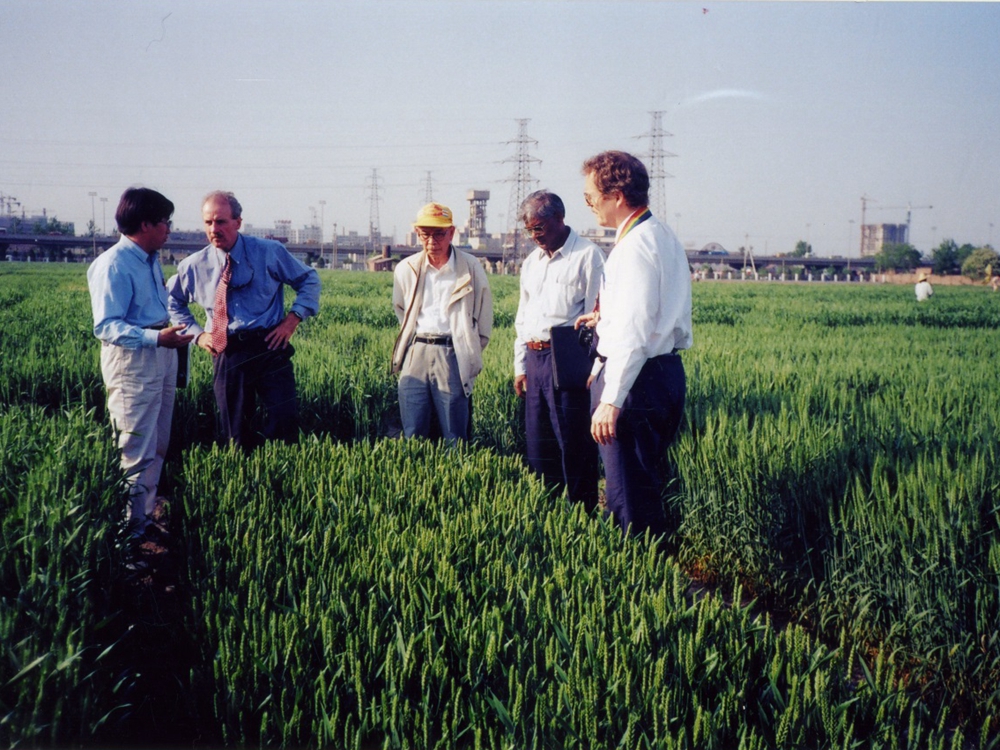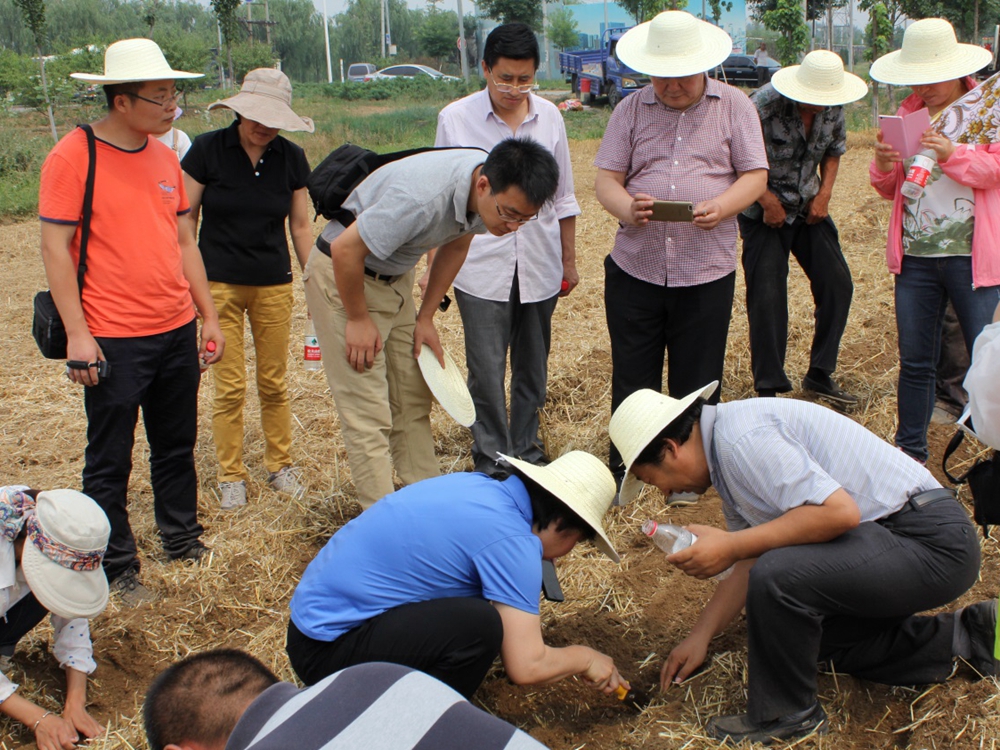ICS Scientists Achieved Three Second-Class National Science and Technology Awards in 2015
Date:2016-01-22Author:AdminSource:ICS
ICS scientists achieved three second-class National Science and Technology Awards in 2015, they are Introduction and utilization of CIMMYT wheat in China by He Zhonghu’s team, Research and application on canopy-topsoil optimization technology system of high yield for maize by Zhao Ming’s team and Maize Planting Handbooks and Flip Charts by Li Shaokun’s team. The awarding ceremony was held in the Great Hall of the People.
Introduction and utilization of CIMMYT wheat in China was led by the Institute of Crop Science, CAAS, and six provincial agricultural academies in Sichuan, Xinjiang, Yunnan, Gansu, Ningxia and Hubei. Many CIMMYT scientists were involved in this collaboration, including S. Rajaram, R. Singh, and Javier Pe?a. CIMMYT and China started collaboration in the early 1970s, shuttle breeding to improve wheat disease resistance was initiated in the mid 1980s, and the CIMMYT-China Office was opened in 1997. More than 20 Chinese institutes have been involved in germplasm exchange and training. Chinese wheat breeders have increasingly used CIMMYT breeding stocks to generate new wheat varieties, with CIMMYT germplasm contributing about 7% of the genetic material in Chinese wheat varieties during the past three decades and about 9% in recent years. More than 26% of all major wheat varieties released in China after 2000 contain CIMMYT germplasm. CIMMYT germplasm has contributed higher yield potential, rust resistance, and better quality to Chinese wheat. From 3.8 million to 10.7 million tons of added wheat grain worth between US$ 1.2 billion and US$ 3.4 billion (based on 2011 prices) have been produced thanks to the contributions of CIMMYT germplasm, as reported in “Impact of CIMMYT Wheat Germplasm on Wheat Productivity in China” authored by Jikun Huang and his colleagues at the Center for Chinese Agricultural Policy of the Chinese Academy of Science (CAS).

In order to resolve plant lodging and premature senescence with high density, which are the restricting problems to improve maize high yielding. Zhao Ming team of the institute of crop science, CAAS, established the canopy-topsoil optimization technology system, which aimed at synchronous optimization of the canopy and topsoil, created three key technology, i.e., "three modify -subsoiling", "three resist- chemic regulating”, and “three adjust-dense planting”. Innovated three dense planting technology pattern for high yield and efficiency, i.e., "deep layer- dense canopy", "control plant type - promoting the root", and "improving soil fertility - high fertilizer effeciency", by the integration effects of the three key technology. The innovated key technology and technology pattern were listed as one of main technology for MOA and others, which promoted in maize plant area of 8 million ha, cumulative increase maize yield of 8.34 billion kg, and cumulative increase economic benefit of 14.32 billion yuan, in the 7 provinces in Northeast and Huang-Huai-Hai Plain of China form 2012 to 2015.

Maize Planting Handbooks and Flip Charts was created by a large team including hundreds of maize experts and led by Prof. Shaokun Li who is the chief scientist of crop cultivation and physiology innovation team in Institute of Crop Science, CAAS. More than 500 maize experts in different maize production regions participated in writing these 6 handbooks and 30 flip charts.
These handbooks and flip charts were created based on the natural and ecology characteristics of different regions. The core of the work is the new idea and new technology of the modern maize production. Until the end of Dec. 2014, these handbooks had been published for 21 times and printed for 910000 copies, and the flip charts had been published 16 times and printed for 1654 000 copies. It had also been translated into Monglian, Uygur and Kazak and so on and published. Maize Planting Handbook in Southwest was also translated into English and used as agricultural exchange and training book for Southeast Asia and Africa. These handbooks and flip charts play great role in all the maize production regions.
